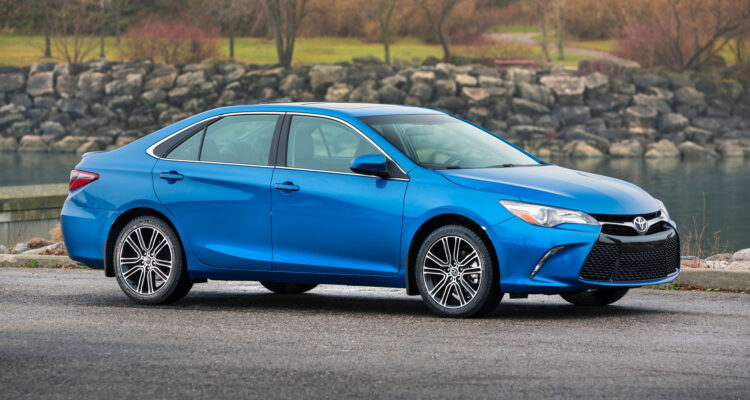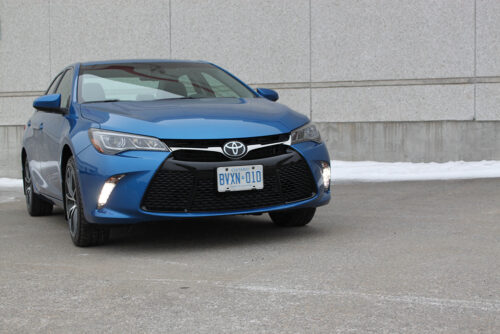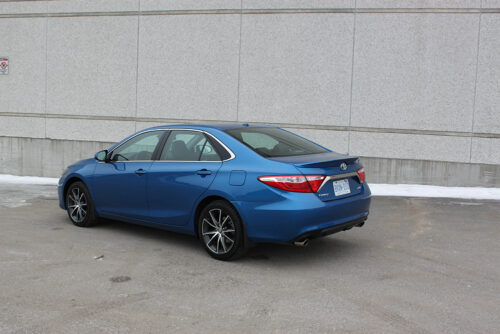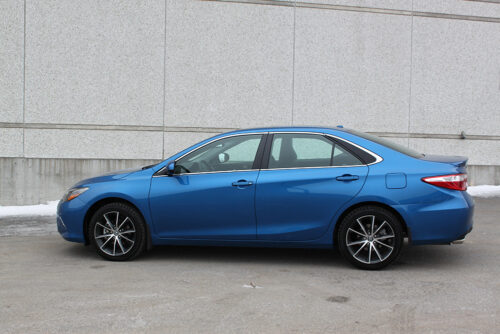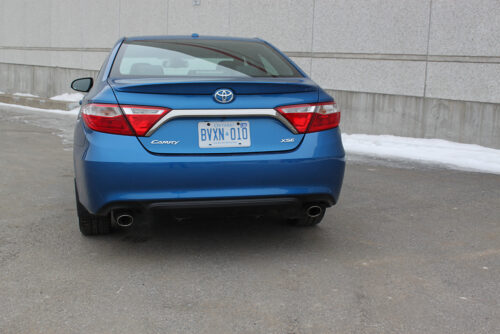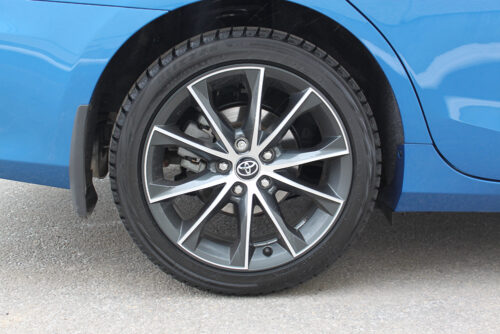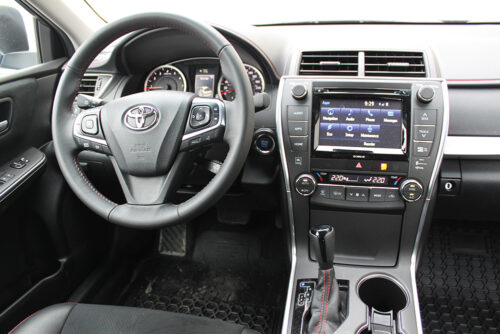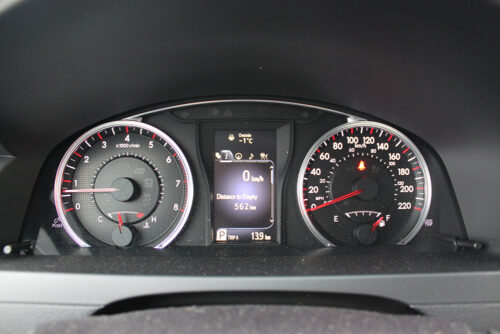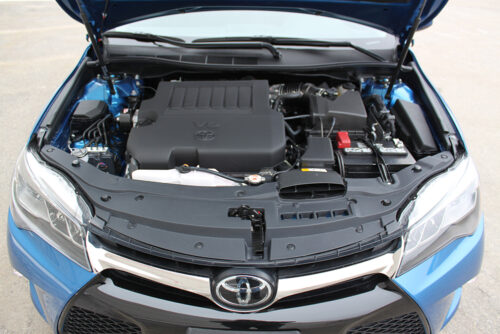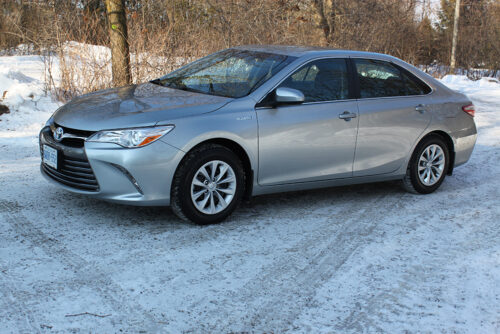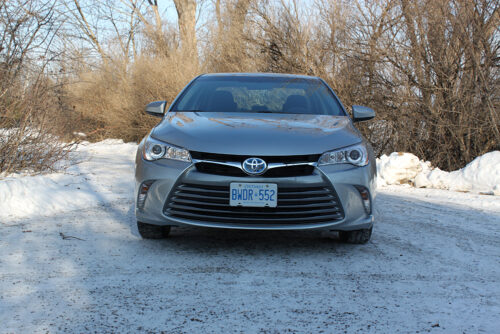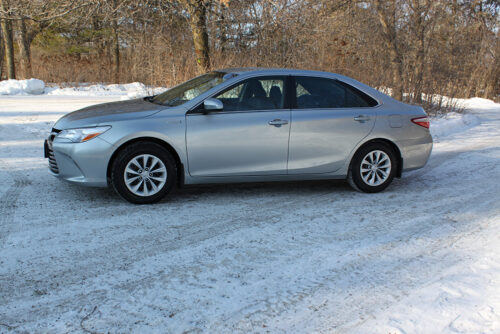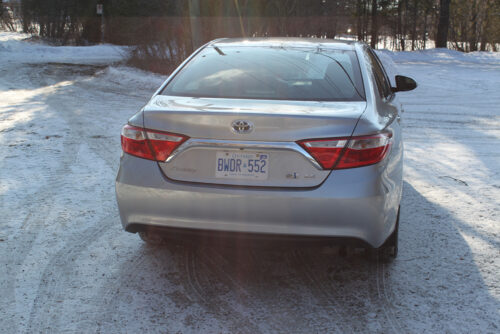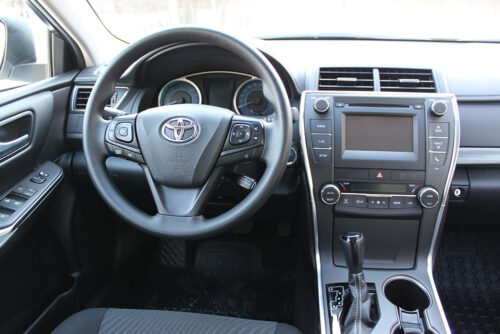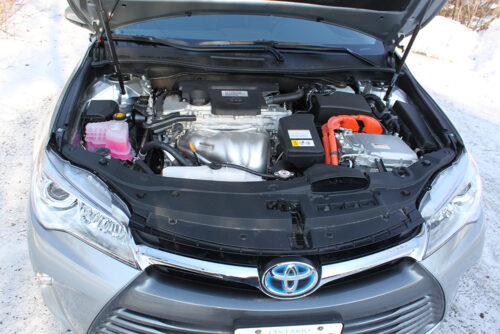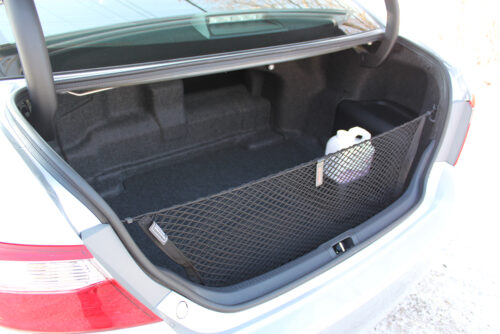I have a pair of friends who scoff at me every time I mention I am picking up a Toyota for a test drive.
Granted, they have high standards in general and even more so when it comes to cars.
So I know they will be all over me for saying this, but here goes: the 2017 Toyota Camry comes close to meeting those standards.
At least when we are talking about the Camry XSE with the six-cylinder engine tested. The hybrid version that was tested a week before the XSE would probably not make either of them happy, however, but that doesn’t mean the hybrid isn’t a good option for many others.
Here’s how they stack up:
The hybrid Camry uses a 2.5-litre four-cylinder engine with hybrid synergy drive paired with a Continuously Variable Transmission (CVT).
Power from that combination is a net of 200 horsepower and 156 lb-ft of torque. Those certainly are not numbers to sneer at, because 200 hp is a good amount of power for a midsize sedan.
It’s how that power gets used, and the CVT, that certainly would not have made my friends happy since those who are a little lighter on the accelerator will reap the most benefit from a hybrid. Neither of my friends are light of foot.
And, in my opinion, the Camry hybrid is quite a bit more enjoyable to drive than Toyota’s best-known hybrid, the Prius.
And while it’s a nice, if tame, drive, the Camry XSE is quite a bit more fun.
That is thanks to the 3.5-litre six-cylinder engine that delivers 268 horsepower and 248 lb-ft of torque. Thankfully, it avoids the CVT treatment in favour of a six-speed automatic transmission.
Jumping in the XSE after a week in the Camry hybrid probably had me hitting the gas a little too hard since I was used to the resistance of the hybrid accelerator.
The V6 offers plenty of power under a variety of conditions, whether for a sedate drive through the countryside as you try to get your son to nap, or pressing hard to pass slower moving traffic on the highway.
And the transmission works smoothly under either condition — and comes with a manual shifting mode if desired.
That power does come with a penalty at the pump compared to the hybrid.
The XSE is rated at 11 litres per 100 kilometres in the city and 7.8 l/100 km on the highway. My average worked out to 12.3 l/100 km.
The hybrid LE is rated at 5.6 l/100 km in the city and 6.2 l/100 km on the highway, while my average worked out to 9.4 l/100 km.
So, unfortunately, both models failed to live up to promised fuel economy numbers.
And while they are both Camry models, they are not identical twins.
The hybrid LE has a little less flair than some of its siblings, especially in the Celestial Silver Metallic paint that does little to draw in the eye.
Add to that the 16-inch steel wheels with hubcaps and, well, I can understand why my friends were underwhelmed.
In (stark?) contrast, however, is the Camry XSE we tested, which has a vivid Blue Streak Metallic paint colour and those steel wheels are replaced by very stylish 18-inch alloy wheels.
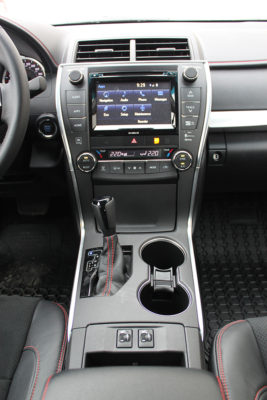
Yes, friends, I said stylish. Get over it!
And the XSE – as well as the SE and Hybrid S trims – gets a sportier look thanks to a more aggressive looking front grille and a rear spoiler.
Inside, the XSE model also stands out thanks to the leather wrapped shift knob, paddle shifters and the three-spoke steering wheel.
And the seats get a major upgrade in the XSE to a black leather and ultrasuede combination compared with the black fabric in the hybrid.
Rear occupants benefits from a decent amount of legroom, helped along by the sculpted backs of the front seats.
The XSE’s seats definitely help elevate the interior style, as do the metallic silver accents on the dash and doors.
And for fans of a sunroof, the XSE has one while the hybrid LE does not (the hybrid XLE does, however).
The XSE also has something extra for audiophiles in the group with its 10-speaker JBL audio system that also comes with a larger 7-inch display screen (up from 6.1-inches).
Control buttons on both sides of the screen in either model are large and easy to distinguish.
Right below the screen are all your ventilation controls, which also keep things simple with knobs and large buttons.
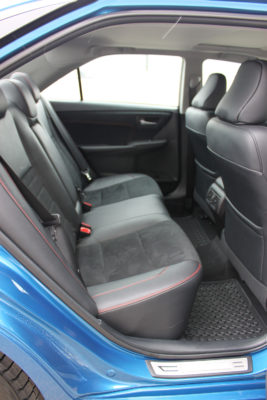
Steering-wheel mounted controls make the infotainment system easy to operate without taking your eyes off the road. And there’s a smaller display screen between the two gauges in the cluster for more vital information, like navigation directions.
Now, while I appreciate the rationale for hybrids – and some are very good, including this Camry – when it comes down to a choice between the hybrid and V6 for me, the six-cylinder would win.
The Camry hybrid midsize sedan is a good option for someone looking to drive a little greener while not giving up comfort and space, which is the case with some other hybrids.
For more driving pleasure, however, the V6 comes out on top thanks to the extra power and performance, despite the extra pain at the pump.
And, at least when tested back to back, the XSE was just more aesthetically pleasing.
I am not sure it convinced my friends, however, but don’t let that stop you from kicking the tires on these midsize sedans.
2017 Toyota Camry
Price as tested: $31,368.47 (Hybrid LE), $37,313.47 (XSE)
Freight: $1,690.00
Configuration: Front-engine/front-wheel drive
Engine/transmission: 2.5-litre four-cylinder engine with hybrid synergy drive (Hybrid LE); 3.5-litre six-cylinder (XSE)/ Continuously Variable Transmission (Hybrid); Six-speed automatic (XSE)
Power/torque: 200 horsepower (net power)/ 156 lb-ft (Hybrid); 268 horsepower/ 248 lb-ft
Fuel (capacity): Regular (64 L)
Combined fuel economy ratings (L/100 km): 5.9 L/100 km (Hybrid); 9.6 l/100 km (XSE)
Warranties: 3-years/60,000 kilometres (basic)
Competitors: Honda Accord, Ford Fusion, Hyundai Sonata
Related links:
Toyota Canada
Canada Free Press



